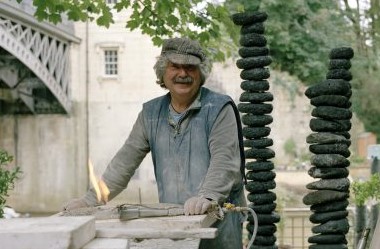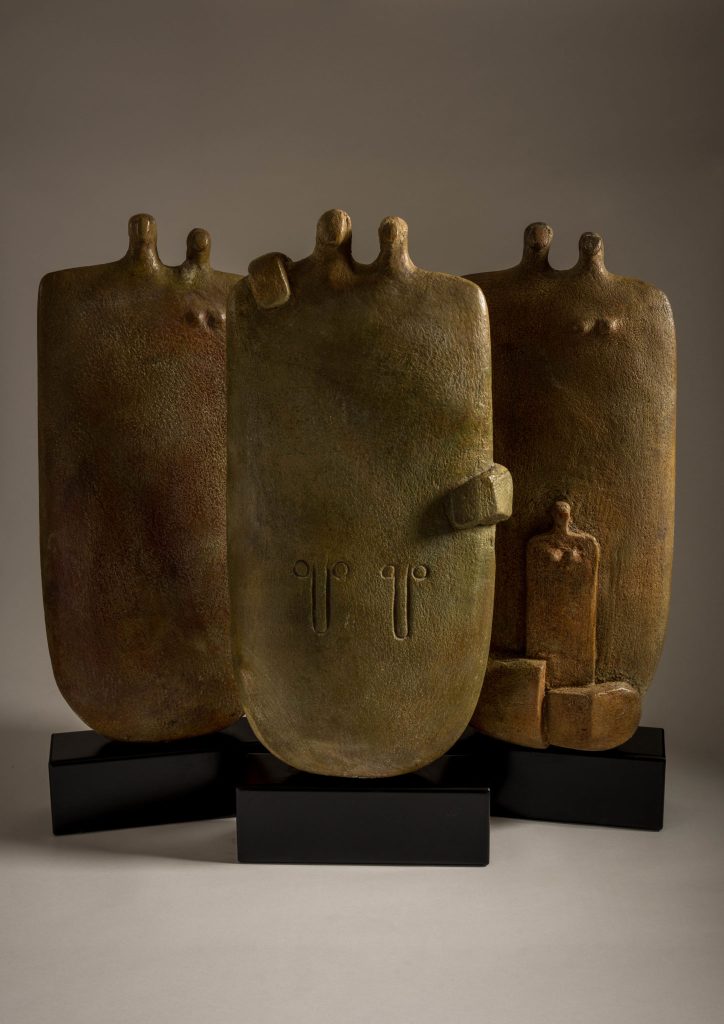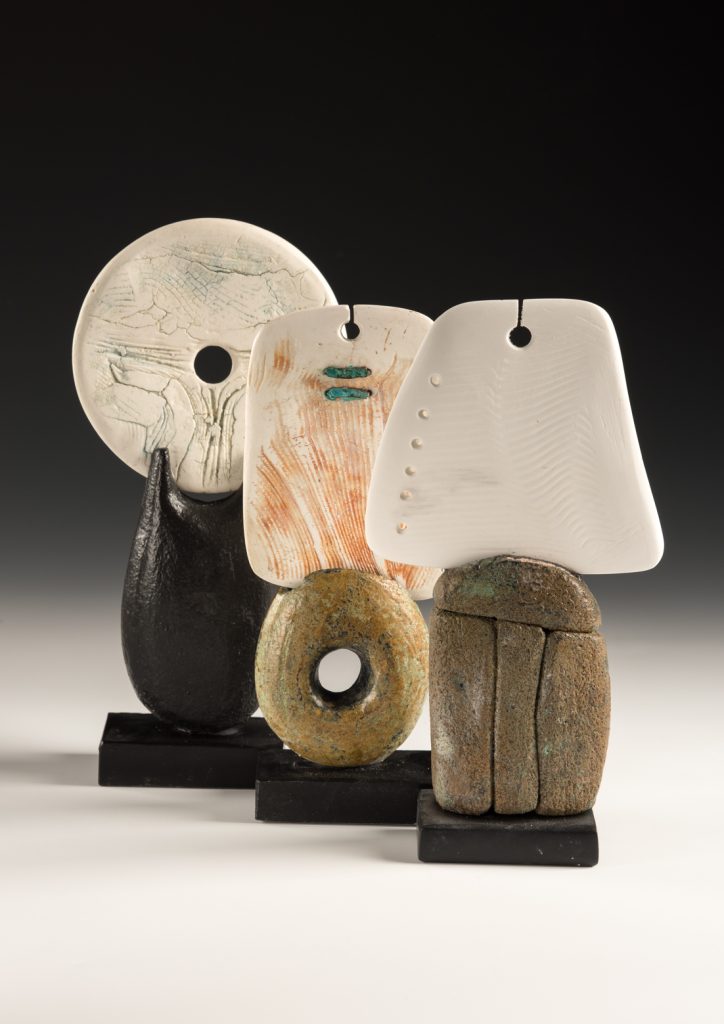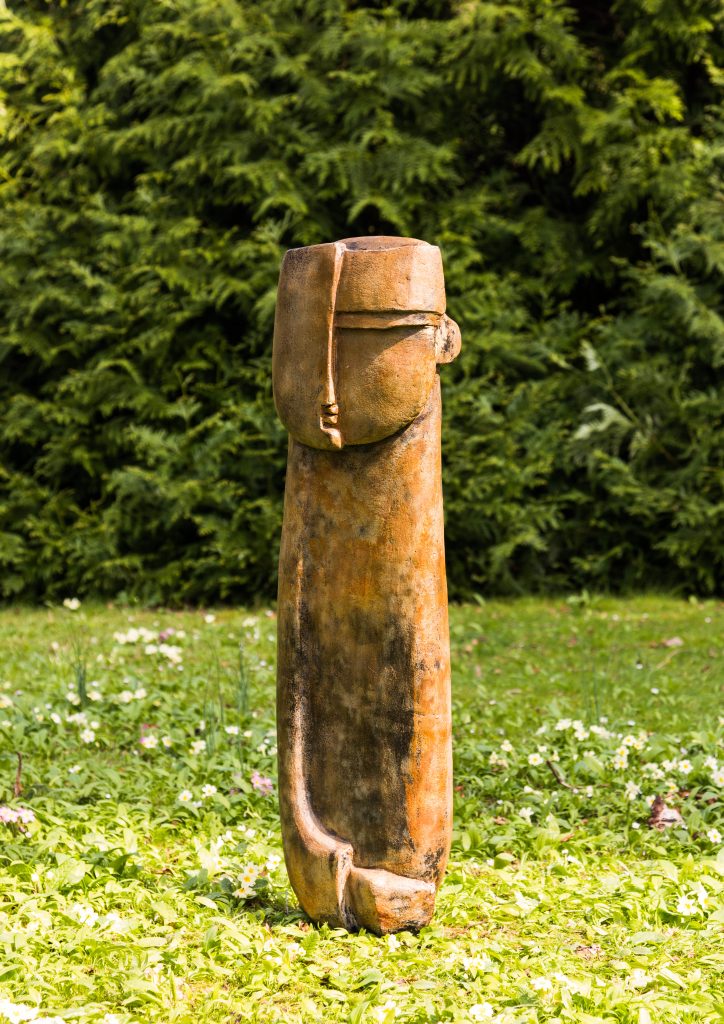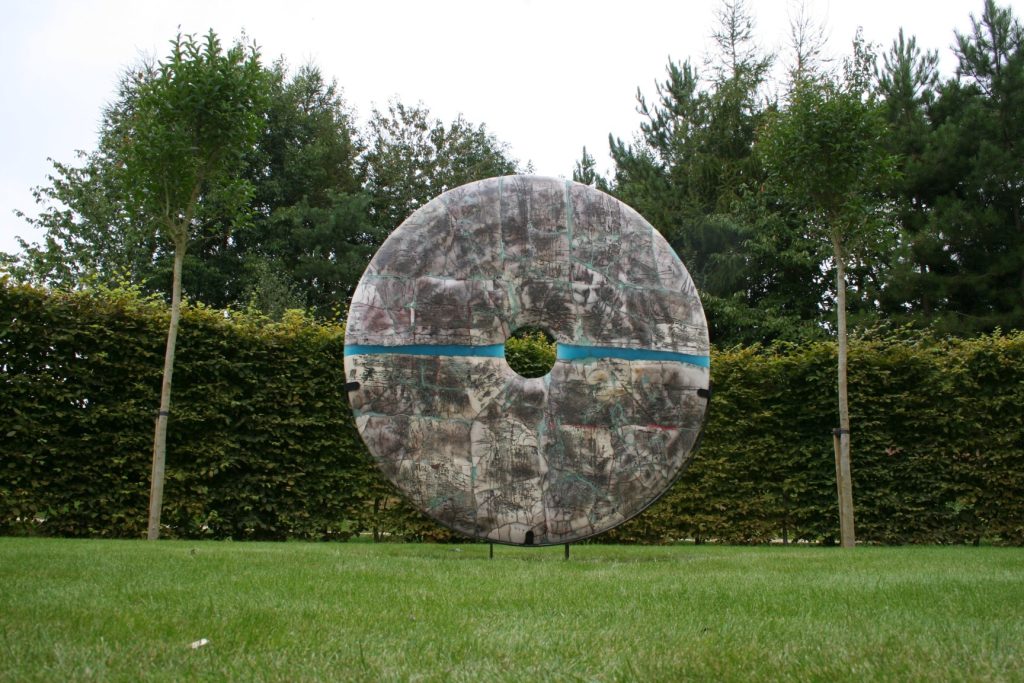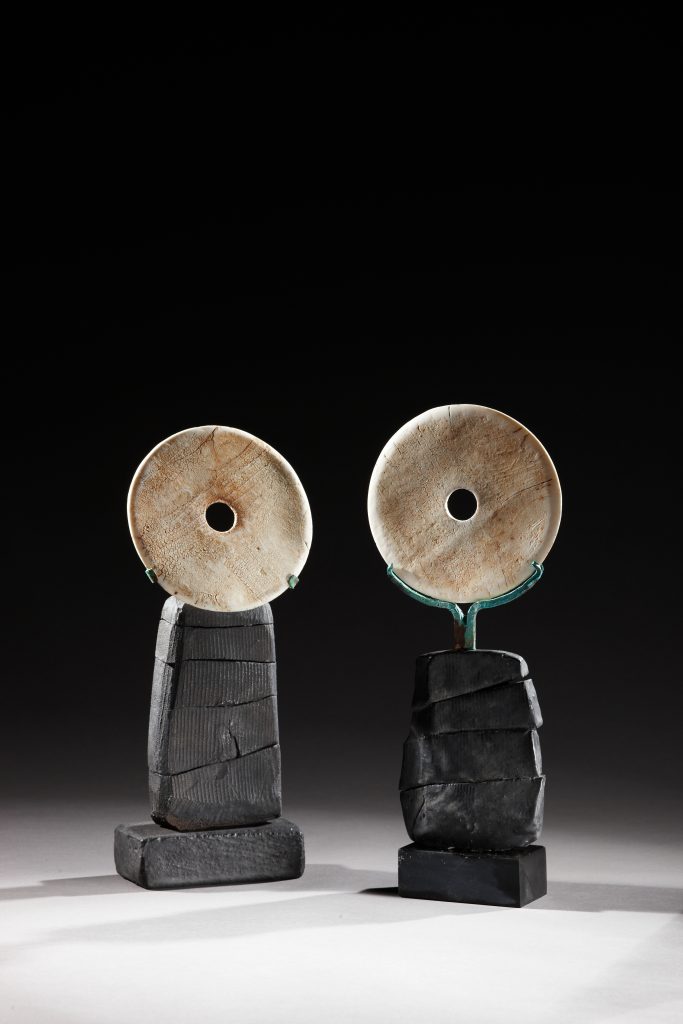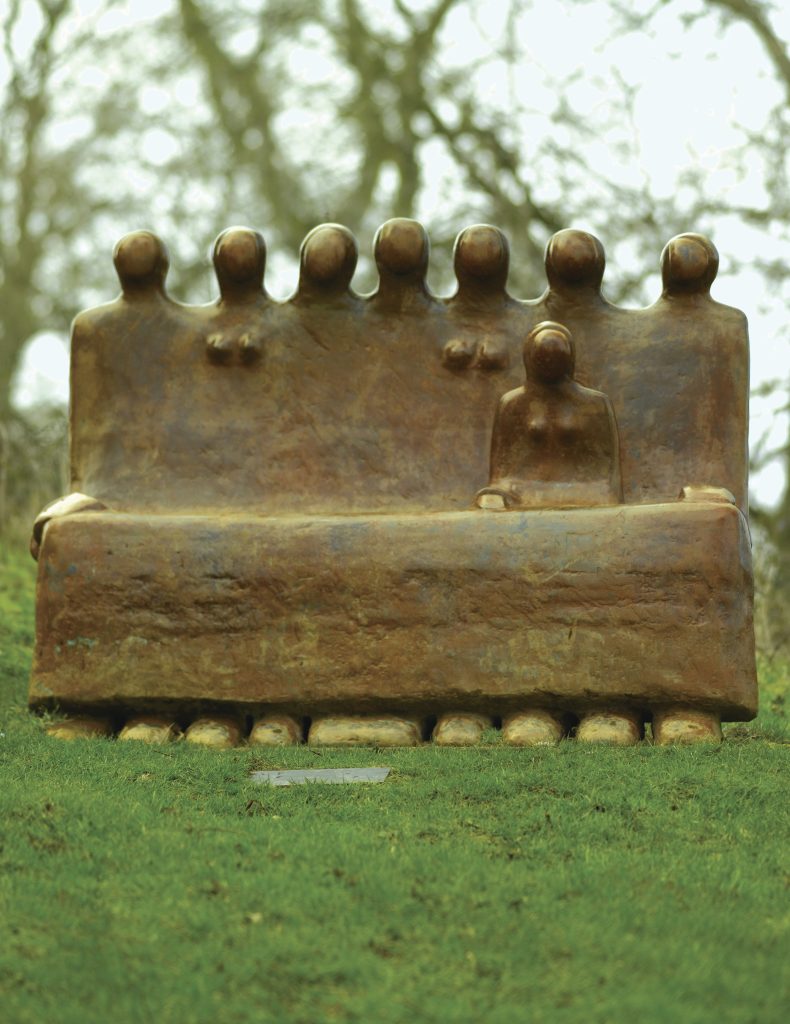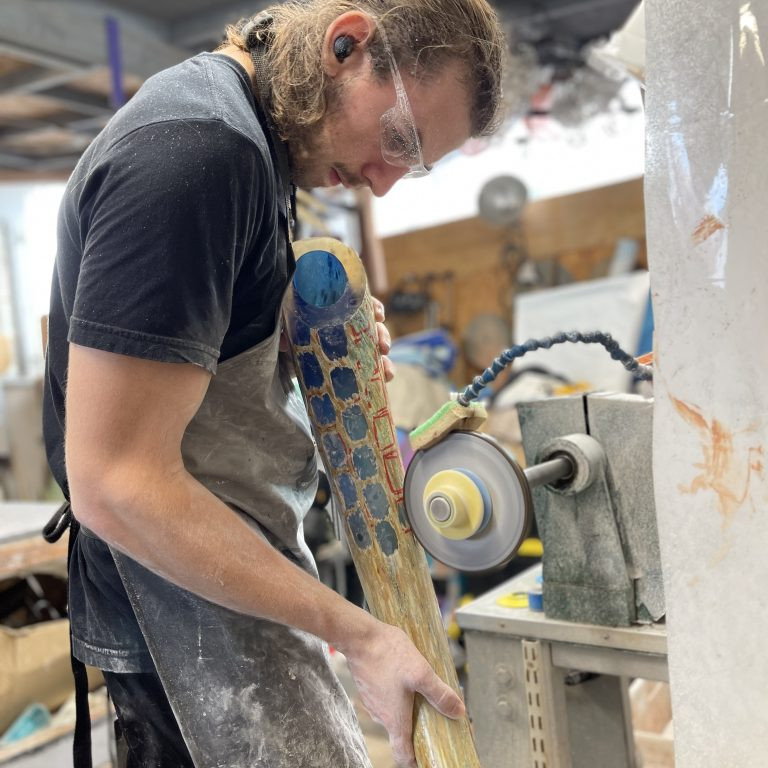Peter Hayes Bath Ceramic Sculpture - UK
Your studio is in a very ‘special’ place can you share your studio and showroom with us?
I converted the old toll house on Cleveland Bridge into a studio in 1982, after returning from a 10 year stint travelling in Africa, Japan, India and Nepal, in order to settle down and try to put all my ideas, techniques and vision into clay.
The artist studio is a very special space, it evolves with the artist. I always remember visiting Takashi Yuhdas’ studio who also lived in Bath. His studio was like a surgeons operating theatre with every tool in its right place, not a speak of dust, so calm and minimal and so correct, his studio reflects his work. As for my studio I seem to work in complete confusion with everything all over the place. It is my own space and it all seems to work out.
Expand on the excitement you find in seeing indented fingerprints in old pots?
As a child my mother used to pack me off with a bungle of sandwiches for the day and I usually ended up at the Birmingham Museum. Pending hours wandering through the galleries, I always ended up in the Archaeology department and was fascinated with the how and why things were made. Sometimes you could see the actual potters finger prints pressed on the side of some of the pots or a cats paw imprint on a roof tile which has been made and laid out to dry a thousand years ago.
Discuss your own clay chart of finger prints.
Clay itself is a wonderful material and each type has its own character and tolerances.
Couple Series
And it is up to the artist to discover how far it can be pushed to its limits. I use many different types of clay, from the very fine bone china and porcelain, to the rough and gritty brick clays. I still enjoy digging my own clay. When the Bath canals were cut in the early 1790, the navvies used to dump a cartload of puddle clay every third of a mile beside the tow path just in case any leakage or break down would occur. This clay has weathered with rain, frost and snow and baked by the sun for 150 odd years.
Porcelain Forms
You have travelled widely and continue to visit and revisit galleries and museums. Discuss the importance of learning from old traditions and how you use them in your own work.
Travel has always been integral to my work. I have been fascinated by the way and how things are made. Why some, long ago African potter would spend hours decorating beautiful designs on cooking pots, why a 3500 BC Cycladic sculptor, would carve a marble figurine using only an obsidian blade and polishing it using sand, only to be buried with him as he passed on to the other world. This art was passed down from father to son for a thousand years with very little change of the sculpture.
Head Figure
You say, “My aim is that the work should not compete with the landscape.” Please expand on this comment and use one or two of your pieces to explain this.
Sculpture in the landscape has many challenges to overcome. Putting the right sculpture in the right place, to small and it looks insignificant, to big and it can dominate. In my view work should not compete with the landscape, but somehow settle into it.
Raku Disc, Private Collection
When does a ceramic become a sculpture?
I am often asked when does a ceramic become a sculpture, I think it is a difficult question to answer. If one would look at say Picasso, whose output in ceramics was possibly more than his paintings, he spent his summer on the Core d’Azor in the South of France, where he collaborated with local ceramicists at the Madovra pottery. An ordinary jug came from the potters wheel, handed to Picasso and he would, with a few pinches of the wet clay, a few strokes of the paint brush and would create a wonderful sculpture of birds or fish or bulls, or even a dancing female, using the handle of the jug as one her arms.
Glass Blade
You now also spend time in Udaipur in Rajasthan, India discuss how India and this part of India has influenced and inspired your work.
My studio in Bath is very important to me, its my space where I can develop my thoughts and ideas into actual pieces. In a practical way being right next to the river Avon it gets very cold in the winter months and breaking ice off the top of my clay bins before start working is not much fun. So for the last few years I have escaped the winter months and headed for Udaipur, Rajasthan India, where I have a studio. This has given me the opportunity to work with other materials, meet and collaborate with other artists and craftsman and of course to explore this wonderful part of the world.
Explain the way you combine different materials to make the whole.
I have always enjoyed the idea of combining different materials together, using clay and metal, glass and acrylic, each being a part of the story of the finished piece.
Discs
I also have fun making a piece, then breaking it and firing the shards in different parts of the kiln. I then put all the fragments together, creating an almost archaeological feeling to the finished work.
Many years ago I took a few old pots down to Cornwall with the idea of throwing them into the sea. As I always enjoyed beach combing and picking up fragments of old Victorian shards that have been tossed by the waves and polished by the sand.
With this idea in mind, myself and Johnny Leach took an early morning stroll and donated pieces to the sea. Some pieces were ceremoniously buried under rocks and little canals. All this was great fun and then forgotten. Several months later, when I returned, quite by accident I uncovered a piece that I must have taken some time to conceal. It had taken on a wonderful patina, I was amazed how the copper surface of the piece had been affected by the sea.
You also comment, “It is my job to push it (ceramics) to the limit”. Comment on this especially for new artists.
Many up and coming makers are taught the rules and boundaries of clay, the limits and what one can except. I believe it is essential to learn the basics first and then be able to break the rules and experiment with different techniques and ideas. It is like learning a musical instrument, only by practice and experimentation and taking the sounds to the limit of the instrument that one can achieve a higher level of making.
Glass Water Feature, Private Collection
Take two very different sculptures, Bronze Bench, Jerwood foundation, Boulders with Blue Wave, Glaxo Smith Kline.
I always remember as a small boy going to see a Henry Moore exhibition and been thoroughly told off by a peaked hated guardian for touching and stroking one of the sculptures. From then on I was determined that anything I make in the future would hopefully be good enough to touch. If you visit the Vatican in Rome, there is a sculpture of St Peter by Arnolfo di Cambio, the foot has been worn away by 600 years of kissing.
Henry Moore loved seeing his sculpture out on the Yorkshire dales with sheep finding shelter and rubbing their backsides on them.
With this in mind, when I was commissioned to do a bronze sculpture for the Jerwood Foundation the title of the work was important to me. The sculpture itself is a group of seated figures or family scene. I decided to call it The Bench to encourage people especially children to sit and even climb over and hopefully with enough time would help polish the patina.
Bronze Bench, Jerwood Foundation
Another commission for the board room of Glaxo Smith Kline gave a different thought. I wanted to create something calm and simple.
Boulders with Blue Wave, GSK, London
The idea of beach washed pebbles came to mind. That increased to boulders and to hold on to the beach, I added transparent blue waves through them.
Contact details:
Peter Hayes
peter@peterhayes-ceramics.uk.com
http://www.peterhayes-ceramics.uk.com
Peter Hayes Bath, UK
Interview by Deborah Blakeley, January 2018
Think a colleague or friend could benefit from this interview?
Knowledge is one of the biggest assets in any business. So why not forward this on to your friends and colleagues so they too can start taking advantage of the insightful information the artist has given?
Other artists you may be interested in:


